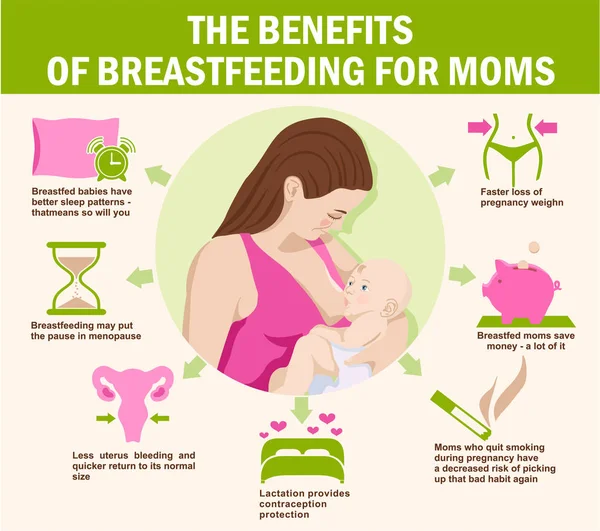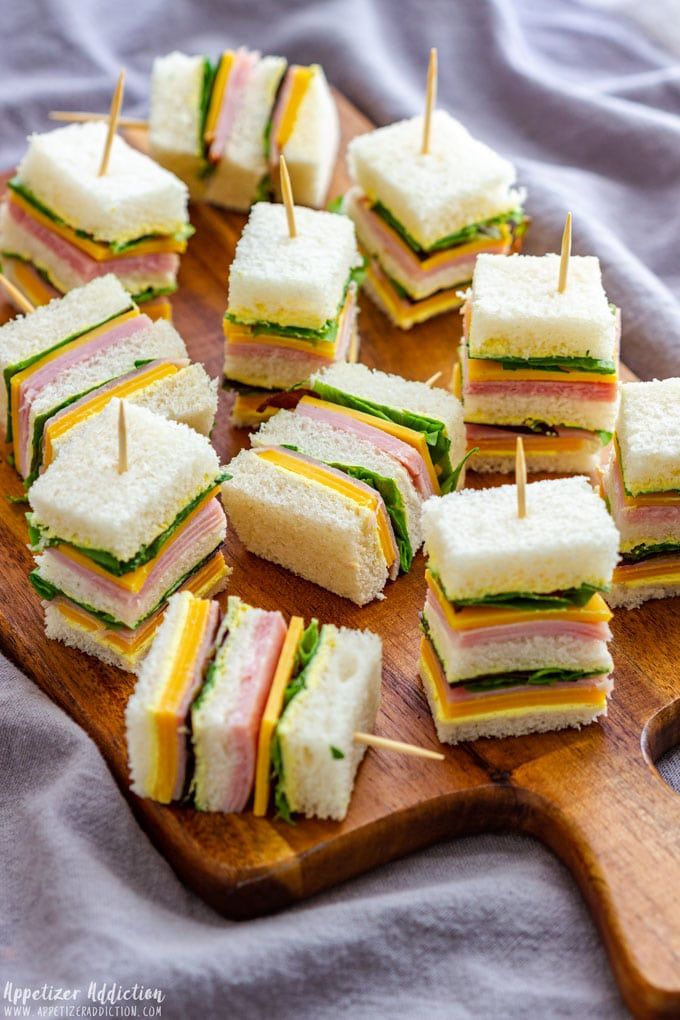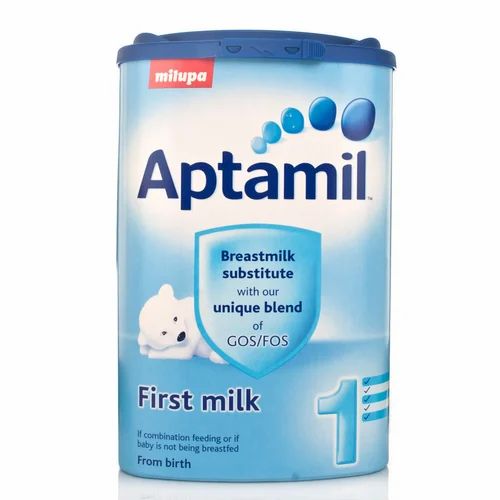Ten month old baby food chart
10 Months Old Baby Food & Diet Chart
Published: by Dora · This post may contain affiliate links ·
Sharing is caring!
Guide on 10 months old baby food - what to eat and what to avoid, including a 10 month old diet chart, feeding schedule, recipes and free printable meal planner.
Jump to:- Food for babies at 10 months old
- Foods to avoid
- 10 months old baby diet chart
- Sample Feeding Schedule
- Breakfast for 10 month old
- Family meals - lunch and dinner ideas for 10 month old
- Snacks for 10 month old
- Feeding tips
- Free Baby Meal Planner
- More meals plans and food charts
- Comments
Food for babies at 10 months old
At this age your baby's nutrition comes from solid foods and breastmilk/formula.
A baby should be eating 750 - 900 calories per day, with about 400 - 500 calories still coming from breastmilk/formula.
The food should mostly be finger food to allow the baby to develop their pincer grasp and oral motor development (see Starting solids - how to transition to finger foods guide).
You can even start giving them some starter cutlery to explore and play with.
You can give baby bite-sized pieces of very soft food cut the size of a pinky fingernail or smashed (such as peas or chickpeas) from the food list:
- Fruits - cooked apples, strawberries, bananas, peaches, nectarines, plums, apricots, blueberries, raspberries, blackberries, mango, pineapples, oranges
- Vegetables - cauliflower, broccoli, spinach, swiss chard, kale, parsnips, carrots, tomatoes, cucumber, zucchini, eggplant, butternut squash, potatoes, sweet potato, asparagus, beetroot, avocado
- Protein - beef, lamb, chicken, turkey, pork, fish, eggs, lentils, chickpeas, beans, tofu
- Grains - oats, millet, wholewheat products (bread, tortillas, pittas, pasta, couscous), quinoa, barley, bulgur, rye products (bread, tortillas, pittas), rice (once a week due to high arsenic content)
- Dairy (pasteurized, no added sugar or salt) - cheese, full-fat yogurt, kefir
- Fats - nut butters, seed butters, olive oil, avocado
Below you will find food ideas and recipes for 10 month old baby.
Foods to avoid
At ten months old you should avoid giving your baby the following foods:
- Cow’s milk – digestive system not yet adapted
- Low-fat milk and dairy products – cause excessive intake of protein and low intake of essential fats
- Honey – can cause botulism
- Salt – kidneys not sufficiently developed
- Fruit juices – high sugar content
- Unpasteurized products – can contain dangerous bacteria
- Smoked & cured meats / processed food – excessive salt intake
- High mercury fish (fresh tuna, halibut, grouper, shark) – excessive intake of mercury
- Chocolate, especially dark – caffeine content
10 months old baby diet chart
This chart was created following the guidelines of the American Academy of Pediatrics, American Dietetic Association and World Health Organization by Dora Babic-Cikos, Phd, our resident nutritionist.
You can check out her book Wean With Confidence for a full 6-12 Month Meal Plan here (7 months of nutritionist-made meal plans and over 100 recipes).
Meal plans and baby food charts for other ages are available in the baby food charts section such as Meal plan for 6 month old baby, 7 month old baby food chart, 8 month old baby food chart, 9 month old baby food chart, 10 month old meal plan (different to the chart presented here), 11 month old meal plan and 1 year old baby food chart.
Sample Feeding Schedule
The feeding schedule will vary whether you are breastfeeding or bottle feeding. This is just an example. You can split your breastfeeding/bottle feedings however you like.
Breakfast for 10 month old
A selection of easy and healthy breakfast recipes for your 10 month old baby
3-ingredient Oat Banana Pancake for Baby
Easy, healthy banana pancakes for baby are made with just 3 ingredients - oats, bananas and eggs.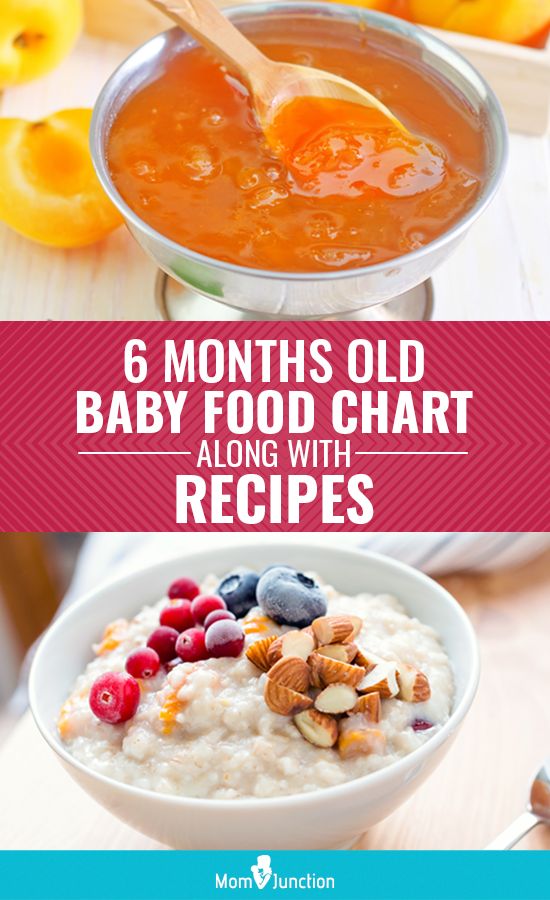 Made in 10 min, perfect for 6 month old baby-led weaning , toddlers and even adults love them. Great with peanut butter and fruit, as breakfast or on-the-go snack. Once you make them they will become a staple in your kitchen. Can be made with no egg (vegan), and are gluten-free and naturally dairy-free.
Made in 10 min, perfect for 6 month old baby-led weaning , toddlers and even adults love them. Great with peanut butter and fruit, as breakfast or on-the-go snack. Once you make them they will become a staple in your kitchen. Can be made with no egg (vegan), and are gluten-free and naturally dairy-free.
Check out this recipe
Peanut Butter Overnight Oats
5 min prep, super nutritious Peanut Butter Overnight Oats loaded with vitamins and minerals provides a healthy breakfast for baby (or toddler) and parent
Check out this recipe
A Healthy French Toast
A healthier version of the traditional French toast, low in saturated fat but high on flavor. Perfect for a weekend breakfast for the whole family and one your toddler will love.
Check out this recipe
Sweet Potato Pancakes
The BEST, super easy, and nutritious sweet potato pancakes – perfect for baby-led weaning, finger food and to take on-the-go.
Check out this recipe
Apple Banana Oatmeal
A great, high-calorie breakfast that's quick to make and a perfect start to the day for a 6-month-old and up!
Check out this recipe
Family meals - lunch and dinner ideas for 10 month old
Selection of easy healthy lunch and dinner ideas for your 10 month old baby that can also be served as a family meal (just add a little salt for the grown-ups!)
Oven-baked Spanish Tortilla (Spanish Omelette)
A healthy and filling meal you can prepare in no time to feed the whole family. A twist on the classic Spanish tortilla that takes 10 min of prep and 45 min in the oven. Easy, delicious oven-baked Spanish tortilla.
Check out this recipe
Mediterranean Sweet Potato Salad with Lemon Mint Vinaigrette
Super easy, 10 min prep, 20 min in the oven, this Mediterranean sweet potato salad is a vegetarian dream with flavorful crispy roasted chickpeas, lettuce, cucumber, tomato and dressed in a refreshing lemon mint vinaigrette.
Check out this recipe
Easy Oven Baked Chicken Fajitas
10 mins to prep, just 1 dish to clean, these oven-baked chicken fajitas are a delicious healthy dinner that can be easily made for babies, toddlers and adults at the same time.
Check out this recipe
Easy Salmon Leek Quiche
Easy Salmon Leek Quiche with a simple homemade crust that will make you feel like a pro. Suitable for baby-led weaning and toddlers.
Check out this recipe
Easy Red Lentil Soup Recipe for Baby
10 min prep, 30 min to cook this nutritious, tasty and easy Red Lentil baby soup recipe is perfect for a 6 month old baby and older. Can be given if you are doing baby-led weaning, for toddlers, kids and it is so delicious adults will love it. Make a big batch and freeze it for days you don't want to cook. It's naturally vegan, dairy-free, and gluten-free.
Make a big batch and freeze it for days you don't want to cook. It's naturally vegan, dairy-free, and gluten-free.
Check out this recipe
Vegetarian Crispy Roasted Chickpea Gyros
10 min prep, 30 min in the oven, easy delicious vegetarian recipe that you can deconstruct for baby, toddler and serve to parents for lunch or dinner.
Check out this recipe
Easy Homemade Wholewheat Pizza
Super easy homemade wholewheat pizza base that is great for baby-led weaning, practicing pincer grasp and for toddlers. A healthier version of the traditional pizza that you can make for the whole family.
Check out this recipe
Best Red Lentil Vegan Bolognese
Rich and hearty, this delicious red lentil vegan bolognese tastes like the original, no joke. Made with healthy vegetables such as mushrooms, carrots, celery, and walnuts and finished with flavorsome bolognese herbs. The whole dish tastes almost exactly the same as an authentic bolognese yet it is healthy, vegan, and loved by babies, kids, and adults. Even my husband, who adores the original bolognese, now prefers this as it makes him feel full but light.
Made with healthy vegetables such as mushrooms, carrots, celery, and walnuts and finished with flavorsome bolognese herbs. The whole dish tastes almost exactly the same as an authentic bolognese yet it is healthy, vegan, and loved by babies, kids, and adults. Even my husband, who adores the original bolognese, now prefers this as it makes him feel full but light.
Check out this recipe
Snacks for 10 month old
At 10 months your baby's snack will usually still be breastmilk or formula, however, if you want some additional snack recipes see below.
Spinach Cornbread Muffins
15 min prep, 1 bowl, healthy and nutritious Spinach Cornbread Muffins that are great for babies and toddlers (and you will love them too)
Check out this recipe
Banana Spinach Pancakes Baby Recipe
A great way to add nutritious spinach to a baby recipes. These healthy spinach pancakes are made with just 4 ingredients - banana, oats, egg and spinach and in 10 minutes. Perfect for 6 month old baby-led weaning, toddlers, kids and even adults love them.
These healthy spinach pancakes are made with just 4 ingredients - banana, oats, egg and spinach and in 10 minutes. Perfect for 6 month old baby-led weaning, toddlers, kids and even adults love them.
Check out this recipe
10 min No-Bake Energy Balls
Super easy no-bake energy balls are a perfect energy booster for babies and toddlers and help their digestive systems work.
Check out this recipe
Zucchini Cake
Add more vegetables to your child's diet with this simple yet delicious zucchini cake – a perfect healthy snack to take with you while you're out and about!
Check out this recipe
Broccoli Cheese Cakes
Broccoli Cheese Cakes - easy, quick and a perfect meal to take to the park or make a large batch and freeze for those days you don't wanna cook
Check out this recipe
Banana Peanut Butter Smoothie
A simple, delicious, nutrient-dense way to start the day or get rid of the mid-afternoon hunger pangs.
Check out this recipe
Feeding tips
- offer foods one by one to control for allergies
- start offering bite-sized pieces of soft food to your baby to help them develop pincer grasp (soft food the size of a pinky fingernail)
- offer small servings of food so child does not get overwhelmed
- always be present when baby is eating
- avoid salt and sugar
- no honey before 1 and no cow's milk or goat's milk unless used in cooking
- have a great bib to minimize cleaning
- serve food in a suction bowl so baby can scoop food out themselves
- teach them to drink little sips from an open cup from the beginning
- notice when baby is full because they will start turning their head away, clamp lips, throw food on the floor, spit food out, push food away
- start teaching them simple baby sign language (ideally to say "eat", "milk" and "water" so they can tell you when they are hungry)
Free Baby Meal Planner
Download, print and stick to your fridge this easy to use meal planner for your baby. Click here to download the PDF Meal Planner for Baby.
Click here to download the PDF Meal Planner for Baby.
More meals plans and food charts
11 Month Old Meal Plan, Baby Food Ideas, Recipes and Schedule
9 Month Old Baby Food Chart, Food Menu and Recipes
1 Year Old Baby Food, Food Chart, Menu, Meal Planner and Recipes
8 Month Old Baby Food Chart, Recipes, Food Ideas and Schedule
more meal plans and food charts
Reader Interactions
What to Feed a 10 Months Old Baby
What can babies eat at 10 months?
Food for 10-month-old babies can consist of fruits, vegetables, fortified cereal, unsweetened yogurts, cheese, and meats. By 10 months old, most babies have at least four teeth at the front of their mouth. They can bite, but it is still difficult to properly chew. Because of this, you'll need to make sure their food is soft enough for them to mash up with their front teeth and gums.
Take a quiz
Find out what you can do with our Health Assistant
How much should a 10-month-old baby eat?
It's helpful to think of food for 10-month-olds as you would for a healthy adult. This means that they should be encouraged to eat food from all of the different food groups, with a healthy balance of fruit and vegetables. Remember, your baby might like foods that you don't, so encourage them to try new things!
This means that they should be encouraged to eat food from all of the different food groups, with a healthy balance of fruit and vegetables. Remember, your baby might like foods that you don't, so encourage them to try new things!
Offer a variety of foods that your baby can easily pick up, and encourage them to self-feed. This can be quite messy, but offering finger food helps your baby develop their hand-eye coordination and establish a sense of accomplishment through independence.
A feeding schedule for a 10-month-old should consist of three main meals per day with two healthy snacks and at least 3–4 nursing sessions or bottle feedings.
The American Academy of Pediatrics recommends that whole cow's milk and low-iron formulas not be used during the first year of life.
A 10-month-old child needs around 920 kcal for boys and around 865 kcal for girls. This will give them the nutrients intake that they need for the day as well. It is best to limit the amount of water or juice that your 10-month-old baby drinks at this point to no more than 6–8 ounces per day.
How much formula for 10-month-olds is enough?
A good feeding schedule for a 10-month-old should include at least 3–4 nursing sessions or bottles per day. A 10-month-old baby should be drinking at least 24–32 ounces of breast milk or formula every 24 hours. If you divide this between four nursing sessions, it is about 6–8 ounces each time. Even if your baby is eating more solid foods, keep offering them the appropriate amount of breast milk or formula.
Your child may also become a picky eater at this age. The American Academy of Pediatrics suggests that it can sometimes take several introductions to the same food before your baby decides to eat it. They also say that your baby is more likely to want to try a food if they see you eating it. So, if you are eating a salad, you can cook some of the same ingredients to feed to your baby.
Flo is truly amazing. I’ve tried many other apps to track my period but this one is by far superior. They analyze your symptoms and recommend articles to read more about how you can help the symptoms and overall things to make being on your period a little more enjoyable. I give this app a five out of five-star rating. It is truly great.
I give this app a five out of five-star rating. It is truly great.
Examples of foods for 10-month-old babies
Here is a list of some foods for your 10-month-old baby, along with other foods that should be avoided until they're older.
Great foods for 10-month-olds:
- Soft, ripe fruits such as bananas, pears, peaches, and berries that have been cut into small pieces
- Iron-fortified cereals served either dry or mixed with formula or breast milk
- Cooked vegetables including carrots, peas, green beans, spinach (and other leafy greens), squash, and potatoes (white and sweet) that have been mashed or cut into small pieces
- Whole cooked beans
- Well-cooked meat, poultry, and fish that is minced
- Dairy products
- Egg yolks
- Starchy foods (breads and pasta)
Foods to avoid
- Whole pieces of fruit
- Large pieces of vegetables
- Hard-to-chew or large pieces of meat
- Popcorn, nuts, and seeds
- Olives
- Honey
- Hard candy, jelly beans, or gumdrops
- Sweets, desserts, and sweetened juices or drinks
- Egg whites
- Shellfish
By offering your 10-month-old baby food that is nutritious, you are starting them out on the right path to a healthy diet and lifestyle.
10-month-old babies eating menu
Your 10-month-old baby will need three meals, two healthy snacks, and breast milk or formula at least 3–4 times per day to provide the nutrition they need to grow. Here is a sample 10-month-old menu for a single day.
Breakfast
- 2 servings of iron-fortified cereal (2–4 tablespoons dry)
- 1 serving of fruit or vegetables (3–4 tablespoons)
- 6–8 ounces of formula or breast milk
Morning snack
- 1 serving of grain (2 crackers, ½ slice bread)
- 1 serving of dairy (1/2 cup of yogurt, 1 ounce cheese)
Lunch
- 1 serving of protein (1–2 tablespoons minced chicken)
- 1 serving of vegetables (3–4 tablespoons)
- 1 serving of fruit juice (3–4 ounces)
Nap time
- 6–8 ounces of formula or breast milk
Afternoon snack
- 1 serving of fruit (3–4 tablespoons)
Dinner
- 1 serving of protein (1–2 ounces of tofu)
- 1 serving of grain (1/2 cup cooked pasta)
- 1 serving of fruit or vegetables (3–4 tablespoons)
- 6–8 ounces of formula or breast milk
Bedtime
- 6–8 ounces of formula or breast milk
This is just a sample menu for a 10-month-old. You can vary the menu depending on your own baby's needs. Make sure your baby gets 2–3 servings of fruit, vegetables, protein, and whole grains daily.
You can vary the menu depending on your own baby's needs. Make sure your baby gets 2–3 servings of fruit, vegetables, protein, and whole grains daily.
These daily servings, combined with the nutrients in 24–32 ounces of formula or breast milk, will give your baby the nutrition they need to grow into a healthy and happy toddler. You are also establishing healthy eating habits from an early age, which can be carried on throughout their childhood and into adulthood.
Scheme of the first feeding of a child (table) with artificial and breastfeeding, what can be given to a baby
The need for the introduction of complementary foods in modern mothers has long been beyond doubt. Pediatricians, pediatric nutritionists and other graduates unanimously say that at some point both mother's milk and formula are not enough to satisfy the growing needs of the child's body for useful trace elements and vitamins. That's when it's time to introduce complementary foods. The fact that your baby is ready to get new experiences and try tastes so far unknown to him is indicated by the presence of the following signs:
• doubling the initial weight of the child,
• ability to sit with support,
• child does not push food out of his mouth,
• curiosity and desire to try something from the common table.
Signs of malnutrition in a child, constant feeling of hunger and anxiety associated with it, weight loss can also be important signals for the start of complementary foods. In these cases, it is recommended to immediately contact a specialist and share your observations with him.
Contents: Hide
- When to start the introduction of complementary foods
- with which products start the introduction of complementary foods
- We avoid errors
- Table of complementary foods by artificial feeding
- Power feeding table when storage is
- start introducing complementary foods
The timing of the introduction of complementary foods is still debated. But if we bring scientific reasoning to a common denominator, then the conclusion suggests itself that complementary foods can be introduced from about six months, and for children with certain medical indications - from 3-5 months. Many experts believe that half a year is the ideal time for complementary foods, when the first colic is over, and the digestive system has matured enough to try new foods.
 The exact answer to the question of when to introduce complementary foods in a particular child can only be given by a pediatrician. In some situations, it may be necessary to introduce new dishes into the baby's diet as early as 4 months, and someone will be ready for this only after six months.
The exact answer to the question of when to introduce complementary foods in a particular child can only be given by a pediatrician. In some situations, it may be necessary to introduce new dishes into the baby's diet as early as 4 months, and someone will be ready for this only after six months. What foods should I start introducing complementary foods with
Fruits, vegetables or cereals? Which of these foods are best for starting complementary foods? Experts have long answered this question as follows: if the baby is underweight, suffers from frequent loose stools, it is advisable to start with cereals (of course, gluten-free and dairy-free), and if everything is fine with weight, then vegetables will be the first in line. Also, vegetable complementary foods are recommended for breastfed children with constipation problems, rickets, or those born prematurely, whose weight is normal or exceeds the standards.
Why not fruit? Everything is simple. Fruits have a bright and sweet taste, and after trying an apple or banana first, the baby is likely to refuse zucchini or broccoli, which do not have the same rich taste. Therefore, the introduction of fruit purees and juices into the diet is postponed until vegetable purees become a familiar dish on the menu. As for cereals, buckwheat, rice and corn are first introduced, as they are characterized by the absence of gluten, saturate and are well digested.
Therefore, the introduction of fruit purees and juices into the diet is postponed until vegetable purees become a familiar dish on the menu. As for cereals, buckwheat, rice and corn are first introduced, as they are characterized by the absence of gluten, saturate and are well digested. Read also: How to properly teach a child to different tastes
Avoiding mistakes
In order for the introduction of complementary foods not to become a test for either the baby or the mother, you need to follow some recommendations. Most importantly, be patient and don't get too upset if things don't go according to plan. Each child is individual, as are their taste preferences and needs.
• Start complementary foods if the baby is perfectly healthy. Contraindications for the introduction of new products will be teething, colds, stress associated with separation or moving, recent or planned vaccinations.
• New foods are introduced gradually, starting with half a teaspoon. In the absence of allergies or digestive problems, the amount of the product is approximately doubled the next day. Sometimes the introduction of a new product stretches up to a week. Do not rush, give the child the opportunity to "taste" this dish. If the baby flatly refuses the offer, postpone the acquaintance for at least a week.
In the absence of allergies or digestive problems, the amount of the product is approximately doubled the next day. Sometimes the introduction of a new product stretches up to a week. Do not rush, give the child the opportunity to "taste" this dish. If the baby flatly refuses the offer, postpone the acquaintance for at least a week.
• Do not force your child to eat. After all, your goal is to introduce your child to new tastes and help develop good eating habits.
• The best time for the first feeding is after the morning feed until 12 noon, when the baby is already hungry and ready to eat something else. In case something goes wrong, you will know about it during the day, not at night.
• In the event of an adverse reaction to the product, such as an allergy, seek medical advice immediately. Then, in agreement with the doctor, offer this dish after a certain period of time.
• Gradually increase the amount recommended by your pediatrician. If you don't fit within a week, don't worry.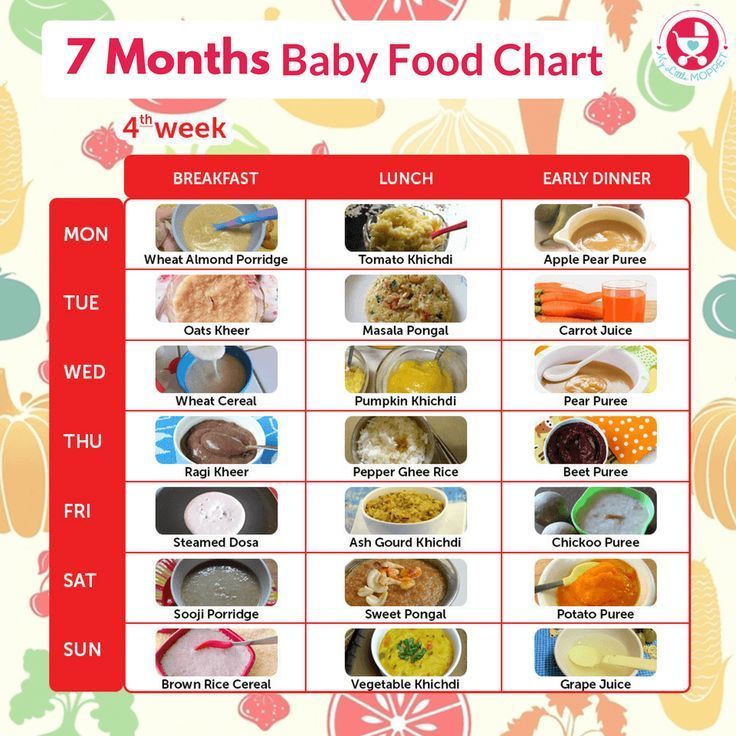 Listen to your child and act accordingly.
Listen to your child and act accordingly.
• Always start feeding with complementary foods. Only then offer breast milk or formula.
• Stick to a 5-meal schedule. Feed your baby at the same time every day.
• Food offered to the baby must be thermally processed - boiled or steamed. The dish should be at a comfortable temperature - about 37 ° C.
• Purees and cereals should be of a liquid consistency so that a child who does not yet know how to chew can comfortably eat them. Thicker dishes with lumps and pieces are introduced into the diet by about a year, when there are already several teeth.
• Do not use salt, sugar or spices when preparing complementary foods. Also, do not add them in order to force the child to eat something. Let the baby get used to natural tastes.
• Complementary foods are prepared at one time and should never be refrigerated until the next meal. Everything should be only the first freshness.
• If you prefer ready-made baby food, carefully study the top manufacturers, pay special attention to the shelf life when buying.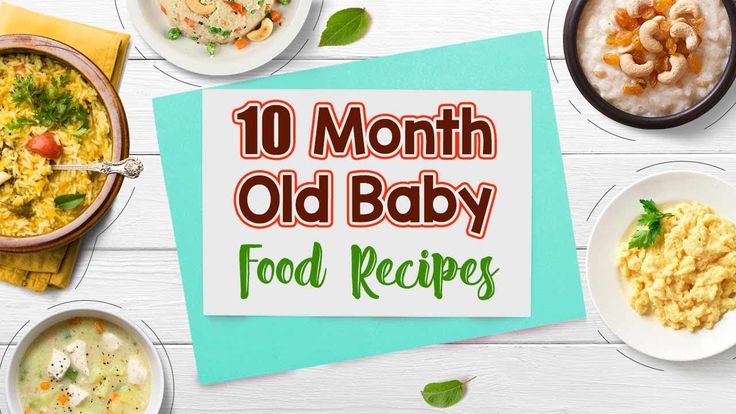
When introducing complementary foods, be guided by the data in the tables, which indicate which products, in what quantity and in what months experts recommend giving. 6 months
7 months
8 months
9 months
10 months
11 months
12 months
0068
180 g
200 g
200 g
Porridge
50–100 g
150 G
180 g
180 g
180 g
200 g
200 g
FRUTE
60 g
70 g
80 g
100 g
100 g 9000
100 g
meat
50 g
60 g
60 g 9000 9000
70 g
70 g
70 g
Cottage cheese
9000 9000
10-30 g
30 g
40 g
50 g
50 g
Zhelki
1/4
1/4
1/2
1/2 9000
1/2
Fish
9000
30 g
50 g
60 g
Vegetable
9000
1 ml
3-5 ml
5 ml
5 ml
5 ml
Sl.

1 ml
3-5 ml
5 ml
5 ml
9006 8 months
9 months
10 months
11 months
12 months
Silent porridge
10–150 g
150–180 g
150–180 g
180–200 g 9000 g 9000 g 9000 g 9000 g 9000 g 9000 g 9000 g 9000 g 9000 g 9000 g 9000 g 9000 g
068
200 g
200 g
200 g
Vegetables
10–120 g
80-120 g
073
150 g
170 g
180 g
200 g
200 g
Military0007
-
-
-
-
-
-
160-200 ml
Fruits
5–60 g
50–60 g
60 g 9000 g 9000 g 9000 g 9000 g 9000 g 9000 g.
 0007
0007 100–120 g
100–120 g
100–120 g
meat
-
-
10-30 g
30–70 g
60–70 g
60–70 g
9000 9000 9000 9007 9007 9007 9007 9007 9007 9007 9007 9007 9007 9007 19 cottage cheese -
-
5–10 g
40 g
40 g
50 g
yellow
-
-
½ 9000
½
½
½
½ --1
Fish
-
-
-
10–40 g
50–60 g 9000
Vegetable oil
-
-
1 ml
3-5 ml
5 ml
5 ml
5 ml
Cream oil
-
-
1-3 g 9000 9000
3-4 g
5 g
5 g
5 g
, as you can see, the schemes for the introduction of feeding and artificial feeding do not differ too much.
 In any case, starting to introduce new foods into the baby's diet, you will have to give the baby milk or formula for a long time, which are still the basis of his nutrition.
In any case, starting to introduce new foods into the baby's diet, you will have to give the baby milk or formula for a long time, which are still the basis of his nutrition. How to introduce solid foods by month
3 months
If your doctor advises your breastfeeding or formula-fed baby to introduce complementary foods at 3 months, start with what the specialist has recommended to you. If these are vegetables, start with the classic - zucchini puree. This vegetable contains many beneficial nutrients and fiber. Start with half a teaspoon, carefully observing the reaction of the child's body. Be sure to supplement your baby with breast milk or formula afterwards. In case the child does not like the zucchini, try giving broccoli or cauliflower. Well, if the doctor advised porridge, feel free to choose buckwheat or corn.
4-5 months
After your baby has tasted zucchini, broccoli and cauliflower, it's time to add other vegetables: carrots, potatoes, green peas. Do not overdo it with carrots, give it no more than 2 times a week. It is even better if this root crop is combined with other vegetables. It's porridge time! Gluten-free, water-cooked buckwheat, rice or corn. If the baby refuses to eat such cereals, add some breast milk or the usual mixture to them.
Do not overdo it with carrots, give it no more than 2 times a week. It is even better if this root crop is combined with other vegetables. It's porridge time! Gluten-free, water-cooked buckwheat, rice or corn. If the baby refuses to eat such cereals, add some breast milk or the usual mixture to them.
6 months
Time to pamper your baby with dried fruit compote, and formula-fed children start giving milk porridge. You can use a milk mixture to prepare such cereals, and in some cases, milk diluted with water. But in general, pediatricians do not advise introducing cow's milk into a child's diet before 8 months, as this can cause allergic reactions.
7 months
After the baby gets used to vegetable purees, you can try to give fruit purees and, if desired, juices, which should be diluted with water. There has been a lot of negative talk about juice lately. There is no fiber in them, but there are a lot of acids, which may not be completely safe for the stomach and have a high sugar content. So consult a pediatrician and think carefully about whether to give the baby juices or still prefer mashed potatoes and compotes. An excellent alternative to juices is children's herbal teas. Start introducing your baby to fruits with apples (preferably green varieties), bananas, and pears. The baby's menu is replenished with a new product - meat. Rabbit meat, turkey meat are best suited. Chicken and veal are also considered a good option. Low-fat pulp without streaks is taken. It is boiled or brought to readiness for a couple, then crushed in a blender or meat grinder. Meat with a gradual increase in its quantity is given as part of vegetable purees. Also at 7 months, it's time to give the baby a pumpkin.
So consult a pediatrician and think carefully about whether to give the baby juices or still prefer mashed potatoes and compotes. An excellent alternative to juices is children's herbal teas. Start introducing your baby to fruits with apples (preferably green varieties), bananas, and pears. The baby's menu is replenished with a new product - meat. Rabbit meat, turkey meat are best suited. Chicken and veal are also considered a good option. Low-fat pulp without streaks is taken. It is boiled or brought to readiness for a couple, then crushed in a blender or meat grinder. Meat with a gradual increase in its quantity is given as part of vegetable purees. Also at 7 months, it's time to give the baby a pumpkin.
8 months
An important moment in the introduction of complementary foods during artificial and breastfeeding occurs exactly at 8 months. It's time to give the baby a yolk. Watch the reaction of the body very carefully: if there are any manifestations of allergies. In case of a negative reaction of the body to chicken yolk, exclude it from the menu and try quail. It is best to give this product in the morning feeding from 9 to 11 hours. Along with vegetable and butter, gluten cereals are also introduced: oatmeal, millet, barley, pearl barley. It's time to give your child a taste of light vegetable soups. The components of the dish should be familiar to the child. Do not experiment by introducing dishes into the diet even with one unknown ingredient. Meatballs, boiled or steamed, are added to the meat in the form of mashed potatoes.
In case of a negative reaction of the body to chicken yolk, exclude it from the menu and try quail. It is best to give this product in the morning feeding from 9 to 11 hours. Along with vegetable and butter, gluten cereals are also introduced: oatmeal, millet, barley, pearl barley. It's time to give your child a taste of light vegetable soups. The components of the dish should be familiar to the child. Do not experiment by introducing dishes into the diet even with one unknown ingredient. Meatballs, boiled or steamed, are added to the meat in the form of mashed potatoes.
9 months
At this age, the baby should be introduced to the diet of low-fat fish: pollock, hake, perch, cod. For these purposes, fillets are taken and steamed, stewed or boiled. For the first time, fish are given in very small quantities. Start with once a week, gradually increasing to two. Remember that either fish or meat is given on the same day, without mixing these 2 products. If at the age of 8 months there were no prunes on the menu of the child, it's time to fix it.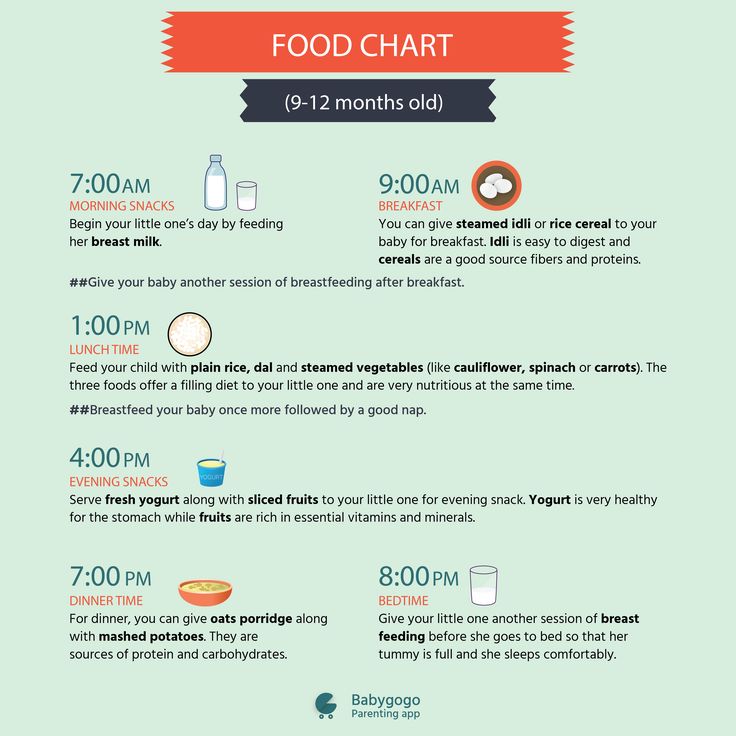 Dried fruit compote is also an excellent option, which at first is best diluted with water. However, you definitely shouldn’t get carried away with dried apricots, it’s better to wait until the baby reaches the age of one.
Dried fruit compote is also an excellent option, which at first is best diluted with water. However, you definitely shouldn’t get carried away with dried apricots, it’s better to wait until the baby reaches the age of one.
Months 10–12
The diet characteristic of this period is characterized by an increase in portions to their maximum values indicated in the scheme. Also, it is at this age that the last feeding is gradually replaced by milk or kefir.Now that you've come across a set of essential tips, you're ready to start weaning. Once again, consult with a specialist, be patient, not forgetting to listen to the baby's body. We are confident that you will succeed. The main thing here, as in any other business, is a positive attitude. It all depends on you and your desire to raise a healthy and happy baby with competent eating behavior. Don't stop if you fail and don't get frustrated if things don't go according to plan. Everything will definitely work out.

#Nutrition for children up to a year #Complementary foods
Diet for a child aged 9-12 months
By 9 months the main complementary foods have already been introduced, so the expansion of the child's diet continues. It is important to know that at this age the consistency of the products should change from homogenized to finely and coarsely ground.
A meat dish for an older child can be offered in the form of meatballs, which diversifies the child's diet and stimulates the formation of chewing skills. Canned meat industrial production for children over 8 months. - coarsely chopped, spices and spices (white pepper, celery, parsley, dill, onion, basil, thyme) can be added to them.The volume of fish puree increases to 60 g per day by 12 months. Fish is given 2 times a week boiled without broth (instead of meat).
At this age, children's pasta can be offered to the child.
The number of children's cookies and crackers is increased up to 10-15 g per day (2-3 cookies).
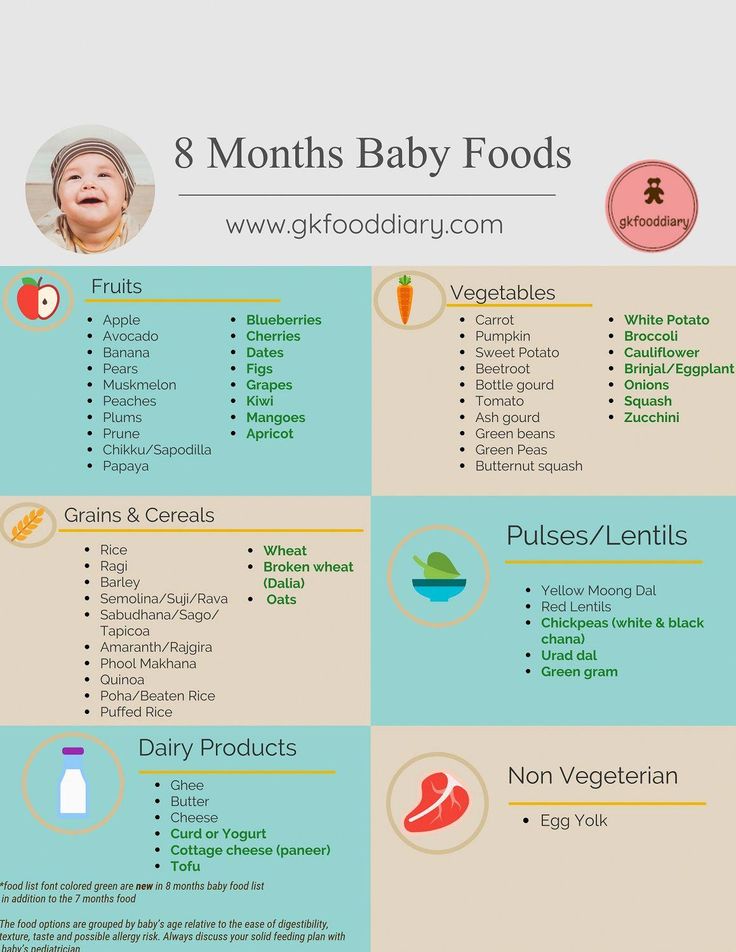
By the year it is useful to add finely chopped fresh garden greens (dill, parsley) to various dishes, which significantly enriches the diet with vitamins and minerals.
Sample diet for a 12 month old child:
breakfast
8 hoursDairy-free or milk porridge*
Butter
Boiled egg yolk
Fruit puree150-200 g
approx. 1 tsp.
1/2 pcs
50 glunch
12 noonVegetable puree
Vegetable oil
Meat puree (meatballs) or fish
Bread/crust
Compote180 g
about 1/2 tsp.
50 g
10 g
50 mlafternoon tea
4 pmBreast milk (kefir or yoghurt)**
Cottage cheese
Fruit puree
Baby biscuits100 g
50 g
50-70 g
2 pcsdinner
20 hoursVegetables or porridge**
Meat puree
Vegetable oil
Fruit juice180 g
20 g
1/2 tsp.
50 mlbefore bedtime
11 pmBreast milk (DMS)*** 200 ml * - dairy-free porridge should be diluted with breast milk or infant formula that the child receives. Milk porridge is diluted with water.
** - the daily volume of kefir or yogurt can be up to 200 ml,
*** - baby milk formulaApproximate diet of a 12-month-old child with an allergy to cow's milk proteins:
breakfast
8 hoursDairy-free porridge*
Vegetable oil
Fruit puree150-200 g
approx. 1 tsp.
50 glunch
12 noonVegetable puree
Vegetable oil
Meat puree/meatball
Bread/rust
Compote180 g
about 1/2 tsp.
50-70 g
10 g
50 mlafternoon tea
4 pmBreast milk or medicated formula for infants with cow's milk protein intolerance
Fruit puree
Rusk150-180 ml
50 g
10 gdinner
20 hoursVegetables or dairy-free porridge**
Vegetable oil
Meat puree
Fruit juice180 g
about 1/2 tsp.
30-40 g
50 mlat bedtime
11 pmBreast milk or formula for infants with intolerance to cow's milk proteins 200 ml * - dairy-free porridge should be diluted with breast milk or formula for children with intolerance to cow's milk proteins.
** - you can either alternate porridge or vegetables, or offer a mixed dish - porridge with vegetables.

